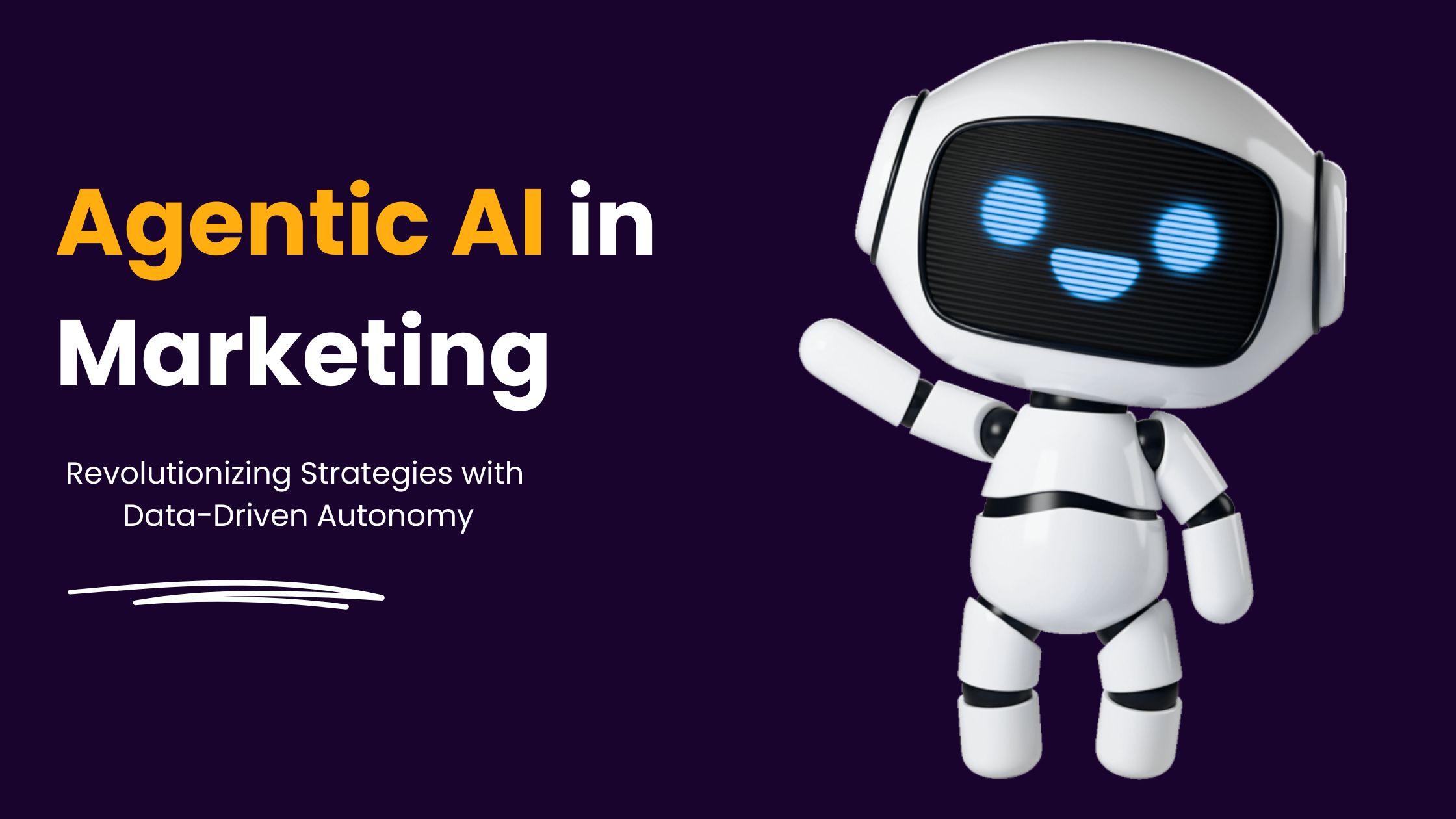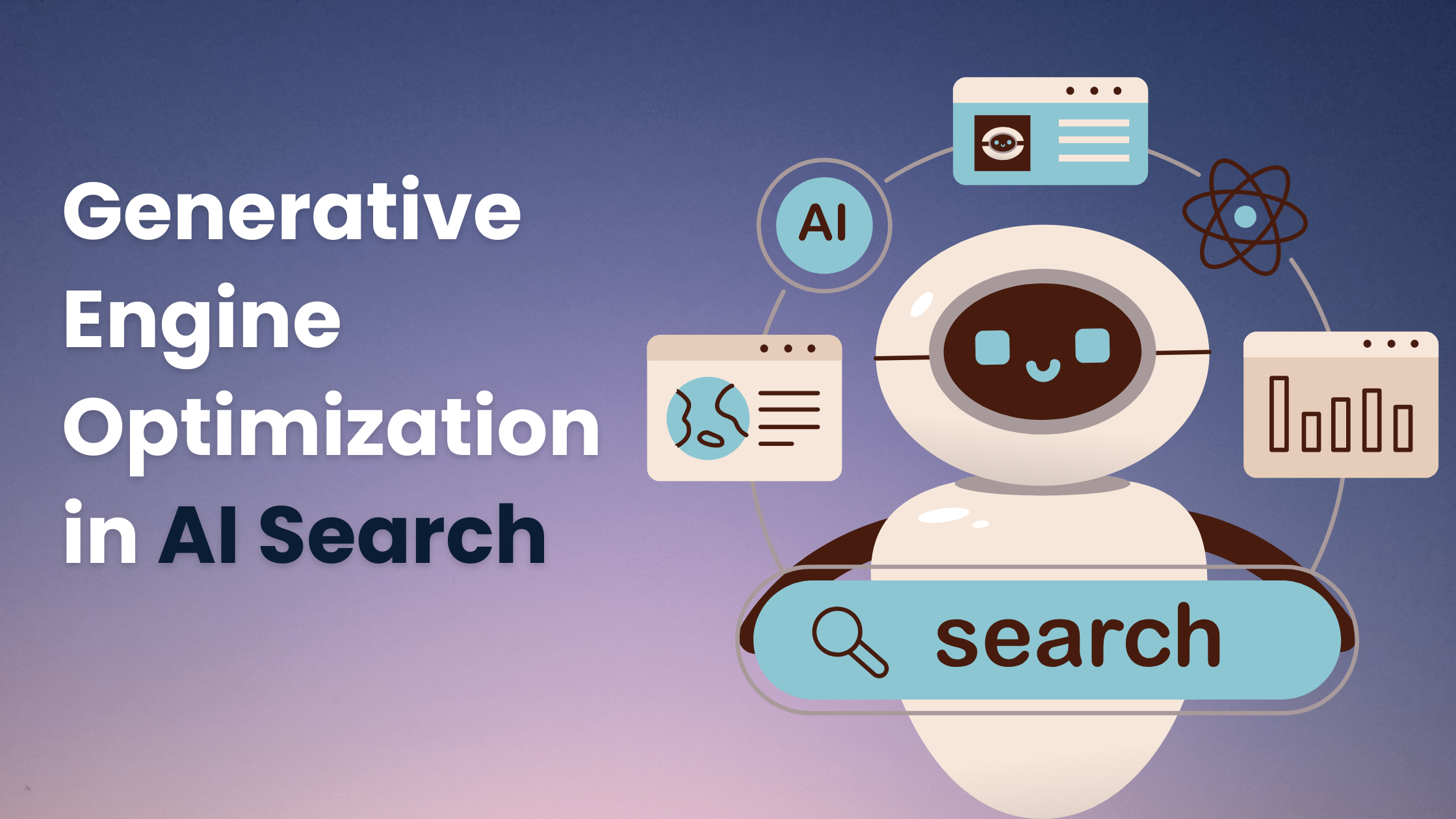Agentic AI is reshaping how businesses function, infusing marketing and other fields with sharp automation and smart decision-making. Infact, experts predict that by 2028, 33% of enterprise software will weave in agentic AI—up from under 1% in 2024— highlighting its rapid adoption across industries.
This shift is also seen in digital marketing services, where AI-driven automation increases customer interaction, streamlines efficiency, and results in improved ROI. But what exactly is Agentic AI, and what sets it apart from traditional AI models?
Let’s learn the potential of Agentic AI and its impact on modern marketing strategies.
What is Agentic AI?
Agentic AI refers to artificial intelligence systems designed to act independently, make decisions and take actions to achieve specific goals. Unlike traditional AI, which merely responds to inputs, agentic AI proactively interacts with its environment, learns from outcomes, and adapts its strategies.
It equips agents with tools to learn, adapt, and tackle complex tasks through autonomy, adaptability, and goal-driven reasoning.
Think of it as a digital entity with a sense of purpose, capable of reasoning, planning, and executing tasks without constant human oversight, driving efficiency and innovation across various domains.
For example, an AI agent autonomously adjusting ad bids— shifting budget to mobile ads at 8 p.m. after spotting higher clicks at lower costs —optimizing performance and boosting results without human input.
How does Agentic AI work?
Perceive: AI agents collect and interpret data from sensors, databases, or interfaces, spotting key patterns and turning raw info into actionable insights about their surroundings.
Reason: Powered by a large language model (LLM), agents analyze tasks, devise solutions, and tap specialized models for tasks like writing or image processing, thinking through each step.
Act: Agents execute tasks by linking to external systems via APIs, with safety checks like limits on actions before needing human input.
Learn: Through feedback, agents sharpen their skills over time, adapting decisions and workflows to boost accuracy and efficiency with every interaction.
How Agentic AI is Different from Generative AI?
| Aspect | Agentic AI | Generative AI |
| Definition | AI that autonomously performs tasks, makes decisions, and adapts to goals. | AI that creates new content (e.g., text, images, videos) based on patterns. |
| Primary Function | Executes actions and optimizes processes (e.g., campaign management). | Generates creative outputs (e.g., ad copy, visuals). |
| Autonomy Level | High: Acts independently with minimal human input once objectives are set. | Low: Requires prompts and human oversight to guide output. |
| Marketing Use Case | Real-time campaign adjustments, personalization at scale | Content idea generation, text summarization, image generation, and media production. |
| Decision-Making | Proactive: Analyzes data and decides next steps | Reactive: Produces content based on user instructions, no decision-making. |
| Data Interaction | Uses data to act and refine strategies (e.g., intent-driven outreach). | Uses data to train models and generate outputs, not to act. |
| Examples | AI personal assistants (e.g., AutoGPT, Beam AI), self-driving systems. | ChatGPT, DALL-E, MidJourney |
| Output | Task completion or process improvement. | New creative assets (text, images, etc.). |
Key Takeaways
- Agentic AI is about doing—it’s a strategic partner that automates and optimizes marketing workflows with autonomy.
- Generative AI is about creating—it’s a tool for producing results under human direction.
- Agentic AI in marketing drives efficiency and decisions, while Generative AI enhances creative output.
The Rise of Agentic AI: Adoption and Market Growth
Surging Adoption Across Industries
A IBM study reveal that 74% of companies have either adopted or are exploring AI over the past year. This momentum reflects a shift toward agentic AI, with firms leveraging its autonomy and reasoning to boost productivity, especially in R&D and workforce reskilling, signaling widespread enterprise enthusiasm.
Notably, companies in China lead in AI adoption, followed by India and Spain, showcasing a global trend toward AI integration.
Key Factors Driving AI Adoption:
| Factor | Percentage |
| Advances making AI more accessible | 46% |
| Growing business needs | 46% |
| Pandemic-driven business shifts | 44% |
Top Considerations for AI Solution Providers:
- Automates processes to enable higher-value tasks (47%)
- Ensures trust in business outcomes (40%)
- Flexible deployment across different environments (40%)
With businesses rapidly integrating AI, the focus remains on solutions that enhance efficiency, build trust, and offer adaptability across industries.
Exponential Adoption and Investment
The agentic AI market is set for a dramatic rise, starting at $5.1 billion in 2024 and projected to soar past $47 billion by 2030, with a CAGR (Compound Annual Growth Rate) of more than 44%. This highlights the technology’s power to reshape industries through its ability to act and decide independently, driving efficiency and innovation worldwide.
Agency Momentum
Agentic AI is reshaping marketing with growing momentum, influencing workforce roles and workflows. It’s taking over routine tasks and shifting focus to strategy, while businesses adapt to new AI-driven priorities. Here’s how it’s unfolding:
- Workforce Impact: AI now handles repetitive jobs like image formatting. By 2028, one in five marketing roles will be AI-run, freeing humans for strategy, creativity, and ethics. With significant implications for specific positions such as performance marketers and data analysts, who will increasingly shift toward AI oversight rather than direct execution.
- AI Oversight Shift: Marketing teams, not IT, will oversee AI performance. They’ll train to spot issues, fine-tune systems, and embrace AI as a helper, not a threat.
- Workflow Evolution: IDC predicts consumer use of AI pushes marketers to rethink processes. By 2029, firms will triple their spending on optimizing AI language models over search rankings for visibility.
- Preparation Steps: Marketers should build AI case studies, align with tech teams, and form strategy groups to tackle an AI-driven future head-on.
Transforming Marketing Outcomes with Agentic AI
-
Personalization at Scale
Agentic AI transforms personalized marketing by harnessing real-time data to deepen customer engagement. HubSpot highlights a 40% rise in retention through AI-driven personalization. Similarly, Gartner notes that 75% of consumers favor brands delivering tailored experiences.
Unlike static traditional approaches, Agentic AI dynamically adapts, evaluating browsing patterns, purchase records, and interactions. It crafts precise, individualized content—product suggestions, responsive ads, and more—ensuring every engagement resonates. This precision elevates conversions and fosters enduring customer loyalty.
For example, Netflix’s recommendation engine curates content based on viewing habits, delivers hyper-personalized content suggestions. Another example of it is Amazon’s AI-driven suggestions refine shopping experiences, boosting conversions and fostering loyalty.
-
Operational Efficiency
Agentic AI streamlines operations, uniting marketing, analytics, and creative teams for seamless collaboration. McKinsey reports a 30% efficiency gain, especially in manufacturing and logistics, where it cuts downtime and optimizes workflows.
Deloitte adds that AI slashes processing times by up to 40% in these sectors, unlocking cost savings and productivity leaps—benefits that ripple into marketing execution. Therefore, Agentic AI empowers cross-functional collaboration in the organization improving productivity and overall success for the company.
Take Salesforce’s Agentforce as an example: the agentic layer of the Salesforce platform. Reports say that it can reduce time to market by 16x compared to DIY approaches — with 70% greater accuracy.
-
Real-Time Decision-Making
With instant data analysis, Agentic AI in marketing empowers swift, informed choices—adjusting campaigns or targeting on the spot. This agility keeps strategies sharp and ahead of trends, ensuring marketing stays responsive and effective.
Agentic AI merges precision and efficiency, positioning forward-thinking brands to excel in a competitive landscape.
Practical Applications of Agentic AI for Marketers in 2025
Campaign Optimization
Agentic AI simplifies campaign management by:
- Adjusting bids, ads, and targeting in real time based on data.
- Running A/B tests on creatives and audiences nonstop.
- Directing budget to top-performing tactics for better ROI.
As a matter of fact, studies show AI-driven campaigns can improve return on investment by up to 30%, ensuring resources deliver maximum impact with minimal waste.
For instance, Meta’s AI-powered ad delivery optimizes ad placements and audience targeting, leading to improved engagement and cost efficiency.
Customer Insights and Outreach
By processing vast datasets, agentic AI in marketing uncovers customer preferences and behaviors. It enables personalized outreach, infact 75% of the consumers prefer doing business with companies that provide customized offers. This precision strengthens connections and boosts response rates.
For example, Salesforce’s Einstein AI exemplifies this by using unified customer data to deliver tailored recommendations and interactions across all channels.
Content Creation and Management
Agentic AI generates high-quality content, from blog posts to ads, customized for specific audiences across various formats, including text, images, and videos.
The HubSpot Survey reveals that marketers are saving 3 hours per piece of content and 2.5 hours per day overall by using AI tools for content marketing. This helps in saving time while maintaining consistency.
Enhanced SEO
Agentic AI elevates SEO by delivering optimized content tailored to targeted keywords and aligned with best practices. Key capabilities include:
- Automated Keyword Research: Identifies high-traffic, low-competition keywords efficiently.
- Content Optimization: Analyzes content using natural language techniques, recommending SEO enhancements.
- Competitor Content Analysis: Uncovers gaps in competitors’ strategies, enabling superior content creation.
This technology streamlines tasks, allowing marketers to prioritize strategic planning while boosting rankings and traffic.
Improving Customer Engagement
Through natural conversations, agentic AI handles inquiries and resolves issues instantly. Firms using AI chatbots report an 25% uplift in customer satisfaction. This builds trust and keeps engagement strong across channels.
Agentic AI enhances conversational tools, fostering meaningful customer connections through:
- Context-Aware Interactions
- Lead Qualification
- 24/7 Availability
It’s all about delivering responses that feel tailored and timely.
Predictive Analytics for Smarter Marketing Decisions
Agentic AI forecasts market shifts and customer needs using data patterns. Infact, organizations leveraging predictive results in 3 times faster decision-making. This foresight supports strategic planning and reduces guesswork.
Social Media Marketing with Sentiment Analysis
Sentiment analysis is essential for effective social media marketing, enabling marketers to understand audience emotions and conversations. Agentic AI enhances this process through:
- Real-Time Sentiment Monitoring
- Competitor Insights
- Crisis Management
Integrating agentic AI-driven sentiment analysis empowers marketers to make informed decisions, optimize engagement, and maintain a proactive presence online.
Challenges of Agentic AI in Marketing
- Adoption Gaps: Resistance to agentic AI often stems from uncertainty about its integration, leaving marketing teams hesitant to fully embrace its potential.
- Loss of Control: Delegating tasks to AI can create unease, as marketers fear reduced oversight and unpredictable outcomes.
- Data Dependency: Agentic AI thrives on high-quality data, which means inaccurate or incomplete datasets can undermine its effectiveness.
- Ethical Implications: Concerns over data privacy, algorithmic bias, and transparency pose significant ethical hurdles for AI-driven marketing.
Solutions to Overcome Challenges
- Bridging Adoption Gaps:
Offer hands-on training to demystify AI and boost team confidence. Plus, launch small-scale trials to showcase value before full rollout.
- Maintaining Control:
Set clear boundaries for AI tasks, keeping humans in the decision-making loop.
- Ensuring Data Quality:
Invest in robust data management—regularly audit and refine datasets to ensure AI operates on accurate, reliable information.
- Addressing Ethical Concerns:
Implement firm policies that safeguard customer privacy, correct biases, and promote transparent communication about AI applications.
Infact, a Harvard Business Review suggests that companies that actively implement ethical AI frameworks noticed 20% higher trust level in users.
By addressing these challenges thoughtfully, marketers can harness agentic AI’s power while minimizing risks and maximizing impact.
Wrapping Up
The emergence of agentic AI is transforming industries by delivering automation, sharp decision-making, and greater efficiency. Businesses adopting this technology stand to secure a substantial lead, streamlining operations and elevating customer interactions.
In marketing, maintaining a competitive edge demands intelligent strategies. Collaborating with digital marketing services that harness AI-powered tools enables brands to sharpen their tactics, craft tailored content, and boost campaign effectiveness.
Still confused? Contact our experts to get personalized guidance on Agentic AI-driven marketing!
FAQ






